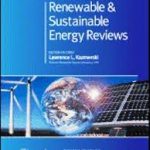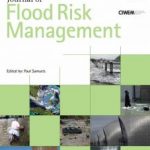
We invite you to an international conference on Energy efficiency policy for Central Europe (26th November 2018 in Prague)
We invite you to an international conference Energy efficiency policies toward 2030 – opportunities and challenges for Central Europe, which we hold in cooperation with the Czech Technical University in Prague and the Czech-Austrian Energy Expert Group. The conference will take place on 26 November 2018 in How2Base Hall in the city centre of Prague (address: Římská 20, Prague 2).
Capacity of the conference is limited! Please confirm your attendance until 15th November 2018 by e-mail to: precechtel@e-academia.eu.
Detailed conference program here.
Impact assessment of Proposal for a Directive on the limitation of emissions from medium combustion plants – National impact assessment compared to the European impact estimate
The paper shows underestimation of European estimate of the costs induced by the MCP Directive based on SimTool approach.
ABSTRACT: The December 2013 Medium Combustion Plants Directive (MCP Directive) proposal was evaluated by the national governments. In the Czech Republic, there are 6710 plants affected by this Directive, which is about 4.6% of the total of 143,000 relevant European plants.
The paper introduces our approach of policy impact assessment called SimTool. The costs estimated for the European Commission in the background study (AMEC, 2014) are assumed to reach EUR 5.9 million for the Czech Republic for the preferred scenario by the European Commission. Further presented national impact assessment estimates the induced annual costs of the proposal at EUR 61 million, which is about 10 times greater than the European impact assessment estimate.
As part of the national impact assessment, the different fuel categories had to be analyzed separately due to their specific features and different options for achieving the emission limit target values. During the impact assessment, a survey was made in order to determine the source operators’ preferences and responses to the potential adoption of the MCP Directive. Based on the analysis of data from the operators and consultations with experts about the different technologies, technical options for achievement of the proposed emission limits, including an estimate of the operating and investment costs, were proposed.
The paper concentrates on the Czech impact assessment approach and discusses the reasons of the discrepancy between the European impact assessment and the Czech version. We argue that the inaccuracies of the European impact assessments are given by usage of the general abatement cost curves in the models which do not reflect the reality sufficiently. This paper states an argument for the necessity to carry out analysis at the local level
Citation: Vojáček, O., Sobotka, L., Macháč, J., Žilka, M. (2018). Impact assessment of Proposal for a Directive on the limitation of emissions from medium combustion plants – National impact assessment compared to the European impact estimate. Renewable and Sustainable Energy Reviews (Vol. 82, pp. 1854-1862). https://doi.org/10.1016/j.rser.2017.06.119
Assessment of Disproportionate Costs According to the WFD: Comparison of Applications of two Approaches in the Catchment of the Stanovice Reservoir (Czech Republic)
Paper compares Czech and German methodology for the disproportionate costs evaluation.
ABSTRACT: The EU Water Framework Directive requires all water bodies within EU member states to achieve the “good status” by 2015/2021/2027. As it has proved to be very challenging for many water bodies, demand for cost proportionality analysis has increased dramatically, because disproportionate costs are one of the justifiable reasons for a deadline extension. This has led to development of many approaches across Europe. Among others, the Czech official methodology based on monetary cost-benefit analysis and the German “New Leipzig approach” based on criteria and cost threshold were introduced in 2015. Both approaches estimate costs of achieving the “good status”, but differ significantly in evaluating benefits. The Czech methodology identifies various categories of benefits, monetizes them and later compares them with costs of measure implementation. The German methodology determines how proportionate it is to spend on measures based on past public expenditures, objective distance to the “good status” and generated benefits. Both methodologies were tested on a small Stanovice catchment in the Czech Republic with similar results, which allows for a comparison of the two approaches they represent. Achieving the “good status” is viewed as cost-proportionate. Application of both methodologies is associated with numerous problems (e.g., data availability, estimate accuracy), which are further discussed in the paper.
Citation: Macháč, J. & Brabec, J. Water Resour Manage (2018) 32: 1453. https://doi.org/10.1007/s11269-017-1879-z
Special Issue Land for Flood Risk Management
Special issue of Journal of Flood Risk management dealing with coordination of land and flood risk managemenent.
Special Issue was compiled as one of the first outputs of our COST Action LAND4FLOOD (land4flood.eu).
CONTENT:
Hartmann, T., Jílková, J., Schanze, J.: Land for flood risk management: A catchment‐wide and cross‐disciplinary perspective. DOI: 10.1111/jfr3.12344 (available here).
Jüpner, R.: Coping with extremes – experiences from event management during the recent Elbe flood disaster in 2013. DOI: 10.1111/jfr3.12286 (available here).
Pant, R., Thacker, S., Hall, J.W., Alderson, D., Barr, S.: Critical infrastructure impact assessment due to flood exposure. DOI: 10.1111/jfr3.12288 (available here).
Milman, A., Warner, B.P., Chapman, D.A., Short Gianotti, A.G.: Identifying and quantifying landowner perspectives on integrated flood risk management. DOI: 10.1111/jfr3.12291 (available here).
Tarlock, D., Albrecht, J.: Potential constitutional constraints on the regulation of flood plain development: three case studies. DOI: 10.1111/jfr3.12274 (available here).
Seher, W., Löschner, L.: Balancing upstream–downstream interests in flood risk management: experiences from a catchment‐based approach in Austria. DOI: 10.1111/jfr3.12266 (available here).
Machac, J., Hartmann, T., Jilkova, J.: Negotiating land for flood risk management : upstream‐downstream in the light of economic game theory. DOI: 10.1111/jfr3.12317 (available here).
Collentine, D.,Futter, M.N.: Realising the potential of natural water retention measures in catchment flood management: trade‐offs and matching interests. DOI: 10.1111/jfr3.12269 (available here).
McCarthy, S., Viavattene, C., Sheehan, J., Green, C.: Compensatory approaches and engagement techniques to gain flood storage in England and Wales. DOI: 10.1111/jfr3.12336 (available here).
Slavikova, L.: Effects of government flood expenditures: the problem of crowding‐out. DOI: 10.1111/jfr3.12265 (available here).
Socio-demographic determinants of municipal waste generation: case study of the Czech Republic
Are socio-demographic variables relevant factors of municipal waste generation?
ABSTRACT: Increasing pressure of the European Union on diverting municipal waste from landfills requires an active role of households and commands a radical change of their behavior. Knowledge of behavioral patterns enables an effective design of municipal waste management systems. Based on several factors influencing environmental behavior, this paper aims at analyzing differences in municipal waste generation among Czech municipalities using socio-demographic factors. A set of 12 characteristics for 5445 Czech municipalities was investigated. Using ordinary least squares regression, we developed a model with eight indicators describing household size, gender, completed education level and diverse housing characteristics. Even though the model explains only 5.1% of waste generation variability among Czech municipalities, it is statistically significant. Other factors such as age or population density do not improve the model significantly. The resulting model will be used as a basis for further spatial analysis.
Citation: Rybová, K., Slavík, J., Burcin, B. et al. J Mater Cycles Waste Manag (2018), doi: https://doi.org/10.1007/s10163-018-0734-5
Development of methods of economic evaluation of green and blue infrastructure in urban areas
Development of a tool and SMART method for economic evaluation.
The realization of nature based solution fases their low enforceability and awareness of their co-benefits. An economic assessment of specific measures may serve as an important argument for the implementation (planning) of these measeures and leads to an increase in awareness of their importance. The aim of the project was to find, define, systemize and validate methods for the economic evaluation of different categories of nature based solutions (e.g. green walls and roofs, trees, etc.) in intelligent urban areas using green and blue infrastructure. The categories will be quantified both from the point of view of the direct costs and benefits associated with the construction and operation, and from the point of view of the side effects that are currently missing in the decisioin making process. A comprehensive methodology economic assessment was developed within the project, which will serve primarily as a basis for decision-making processes in the public administration.
| Funding Agency: | Technology Agency of the Czech Republic |
| Duration: | 10/2017 – 07/2019 |
| Contact person: | Jan Macháč, e-mail: machac@e-academia.eu |
| Researchers: | Jan Macháč, Lenka Dubová, Jiří Louda, Marek Hekrle, Lenka Zaňková, Jan Brabec |
| In Cooperation with: | The outputs are discussed with practical partners: Czech Landscape and Garden Society; GreenVille service s.r.o. and Ministry of Environment |
| Outputs: | Macháč J. et al. (2019) The methodology for economic assessment of green and blue infrastructure in human settlements. Usti nad Labem: Institute for Economic and Environmental Policy. |





